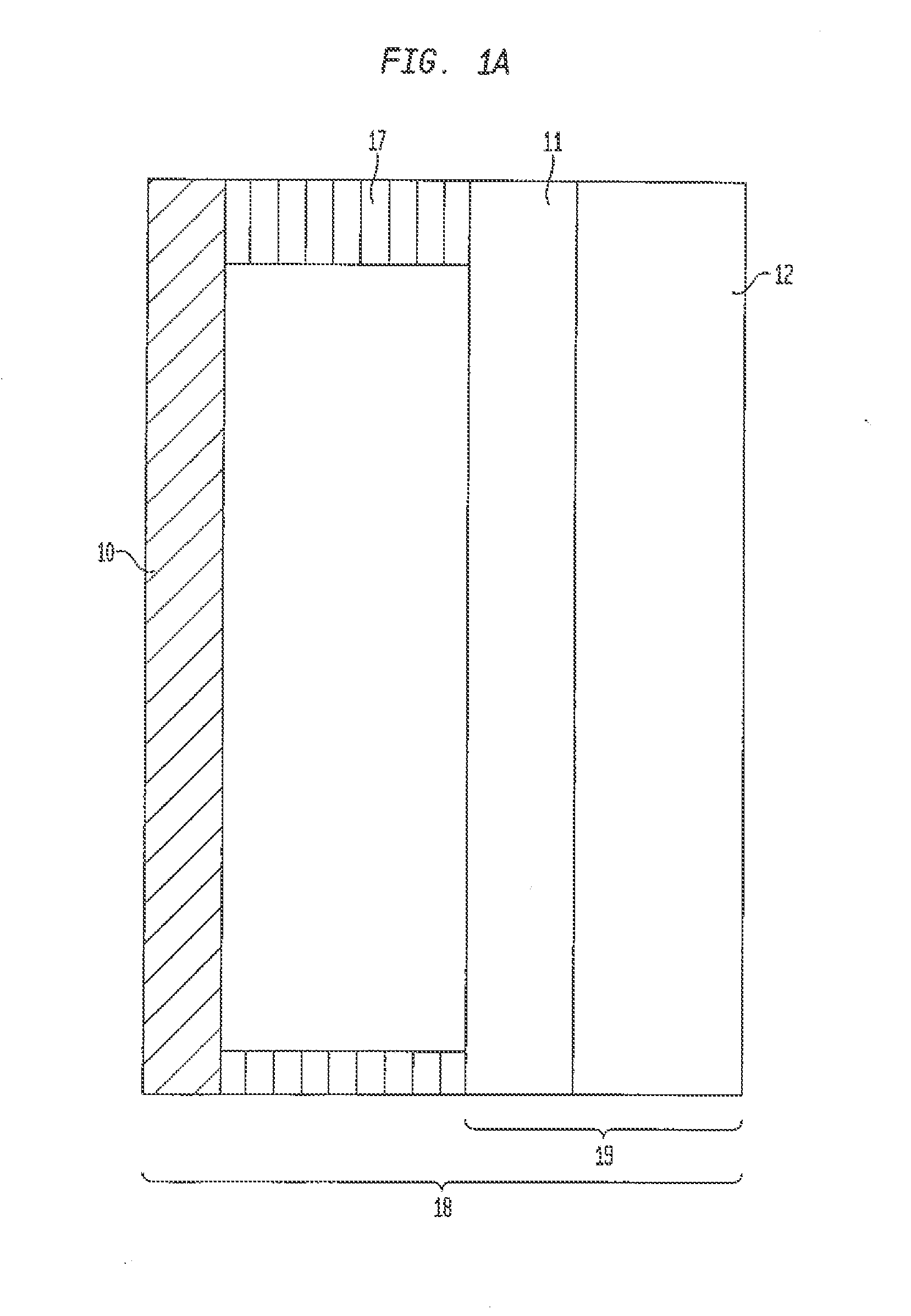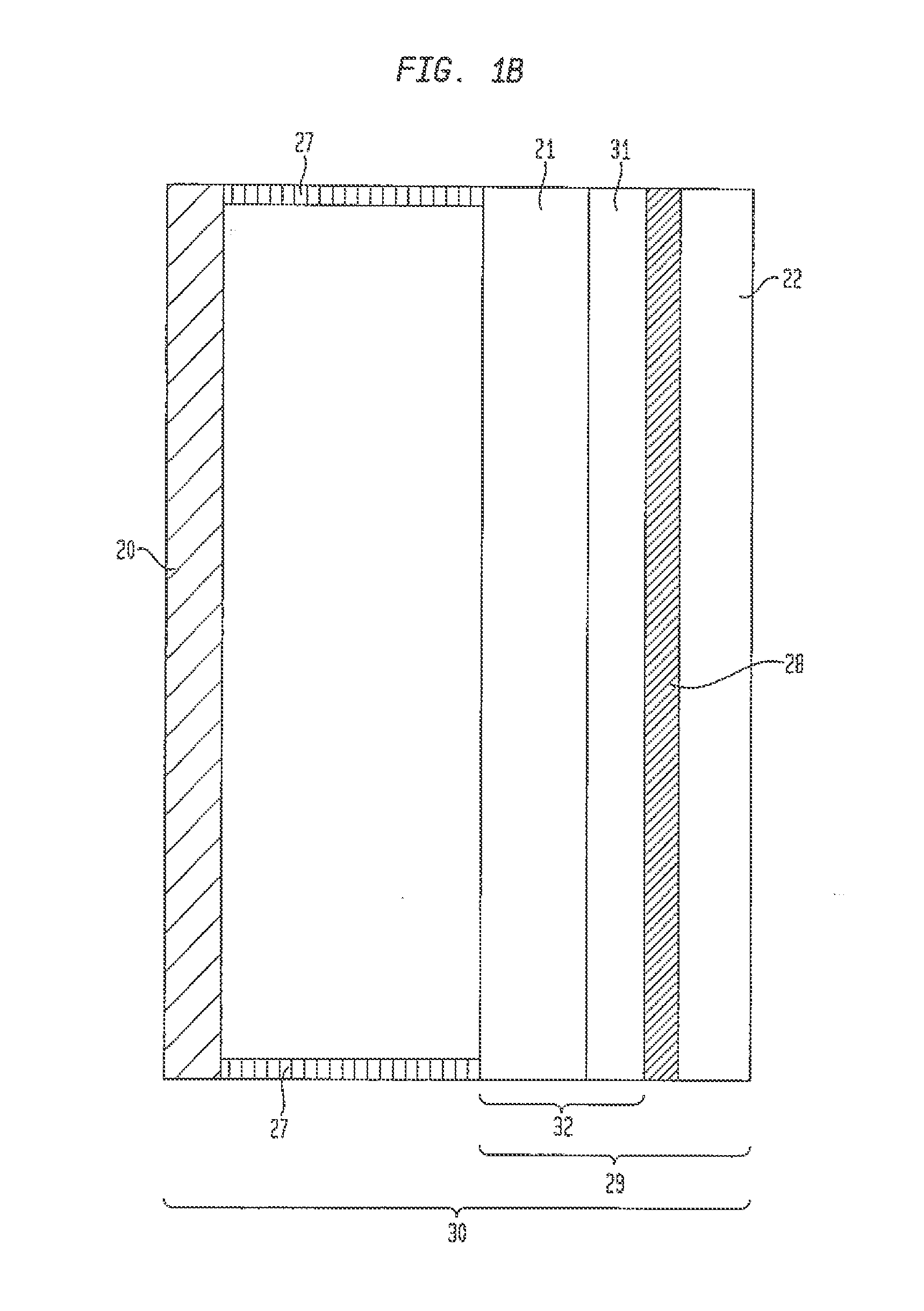Lamination of electrochromic device to glass substrates
a technology of electrochromic devices and glass substrates, applied in the direction of manufacturing tools, non-linear optics, instruments, etc., can solve the problems of high cost of manufacturing, large stress on glass, and high cost of manufacturing devices based on glass substrates, so as to improve manufacturing efficiency
- Summary
- Abstract
- Description
- Claims
- Application Information
AI Technical Summary
Benefits of technology
Problems solved by technology
Method used
Image
Examples
example 1
EC Laminate
[0100]
ComponentMaterialProertiesEC outer laminateFully temperedThickness: 3.2 mmglass panesoda-lime glassCTE: 8.5 ppm / KEC substrateAnnealed soda-limeThickness: 1.7 mmfloat glassCTE: 8.5 ppm / NInterlayer materialPVBThickness: 0.76 mm
[0101]Method of Manufacture:
[0102]The laminated EC structure of Example 1 was manufactured according to a “cut-then-coat” process. The lamination was performed using a conventional nip roller / autoclave process. Equivalent results could be obtained using a vacuum, laminating process.
[0103]Results:
[0104]The laminated EC structure having the components detailed above passed the ANSI Z97.1 standard for impact testing.
example 2
EC Laminate
[0105]
ComponentMaterialPropertiesEC outer laminateFully temperedThickness: 4 mmglass panesoda-lime glassCTE: 8.5 ppm / KEC substrateAnnealed soda-limeThickness: 1.7 mmfloat glassCTE: 8.5 ppm / KInterlayer materialPVBThickness: 0.76 mm
[0106]Method of Manufacture
[0107]The laminated EC structure of Example 2 was manufactured according to a “cut-then-coat” process. The lamination was performed using a conventional nip roller / autoclave process.
[0108]Results:
[0109]The laminated EC structure having the components detailed above passed the ANSI Z97.1 standard for impact testing.
[0110]Outer laminate panels having different thicknesses were tested in Examples 1 and 2, with the resulting laminates both passing impact testing. Equivalent results could be obtained using a vacuum laminating process.
example 3
EC Laminate
[0111]
ComponentMaterialPropertiesEC outer laminateFully temperedThickness: 3.2 mmglass panesoda-lime glassCTE: 8.5 ppm / KEC substrateAnnealed soda-limeThickness: 1.7 mmfloat glassCTE: 8.5 ppm / Kinterlayer materialSentryGlas PlusThickness: 0.89 mm(DuPont)
[0112]Method of Manufacture:
[0113]The laminated EC structure of Example 3 was manufactured according to “cut-then-coat” process. The lamination was performed using a conventional nip roller / autoclave process.
[0114]Results:
[0115]The laminated EC structure having the components detailed above passed the ANSI Z97.1 standard for impact testing. Equivalent results could be obtained using a vacuum laminating process.
PUM
 Login to View More
Login to View More Abstract
Description
Claims
Application Information
 Login to View More
Login to View More - R&D
- Intellectual Property
- Life Sciences
- Materials
- Tech Scout
- Unparalleled Data Quality
- Higher Quality Content
- 60% Fewer Hallucinations
Browse by: Latest US Patents, China's latest patents, Technical Efficacy Thesaurus, Application Domain, Technology Topic, Popular Technical Reports.
© 2025 PatSnap. All rights reserved.Legal|Privacy policy|Modern Slavery Act Transparency Statement|Sitemap|About US| Contact US: help@patsnap.com



